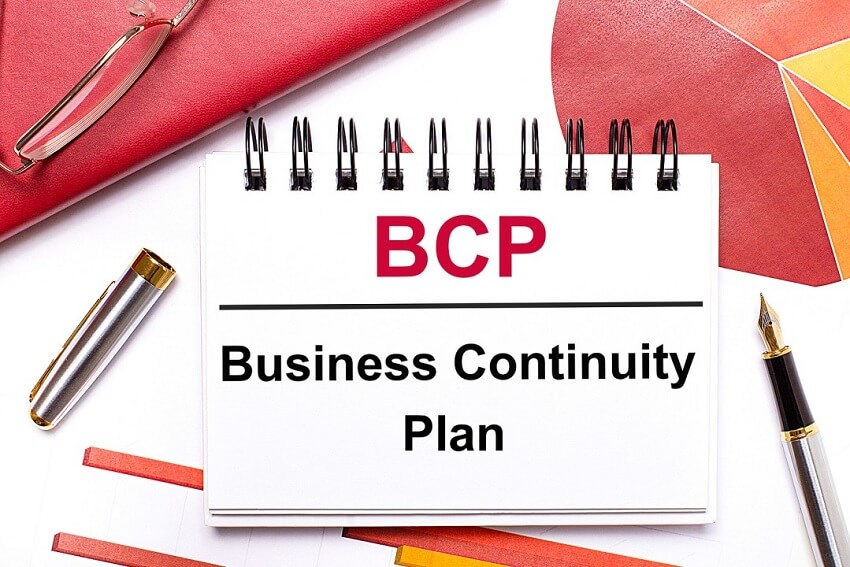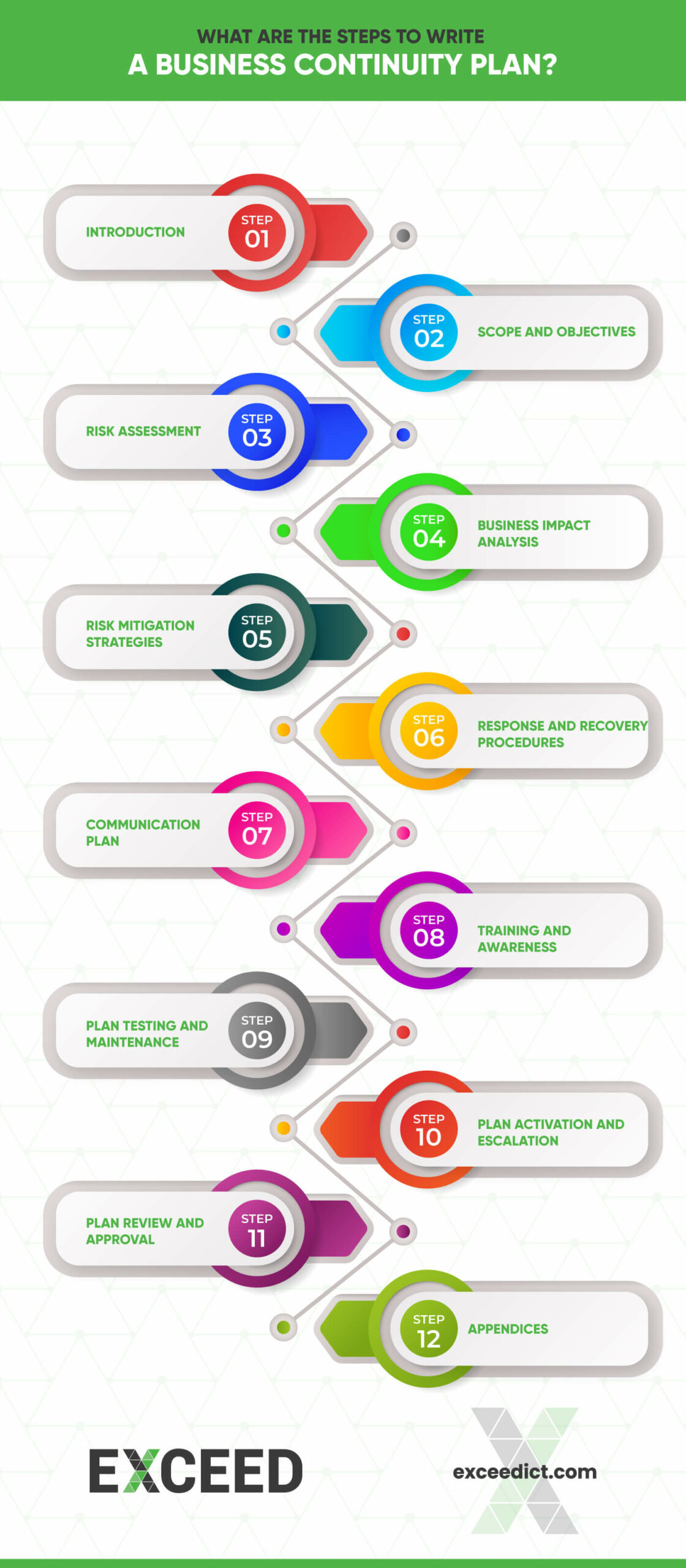
What is a business continuity plan?
 A business continuity plan (BCP) is a documented strategy that outlines how an organisation will continue to operate during and after a disruptive event, such as a natural disaster or cyber-attack.
A business continuity plan (BCP) is a documented strategy that outlines how an organisation will continue to operate during and after a disruptive event, such as a natural disaster or cyber-attack.
It includes risk assessments, recovery procedures, and communication plans to ensure minimal downtime and the resilience of critical business functions. The BCP aims to protect employees, assets, and maintain customer satisfaction.
Why business continuity plan is important?
A business continuity plan is crucial as it ensures the organization’s ability to withstand and recover from disruptive events. It minimizes downtime, safeguards critical operations, and protects assets.
By proactively identifying risks and developing strategies, the plan enhances resilience, maintains customer trust, and preserves the organization’s reputation.
Ultimately, a robust business continuity plan enables businesses to navigate unforeseen challenges, adapt to changing circumstances, and ensure continuity of essential services.
How to write a business continuity plan?
 To write a business continuity plan, follow these steps:
To write a business continuity plan, follow these steps:
- Step 1 : Introduction:
- Provide an overview of the purpose and importance of the plan.
- Explain how the plan fits into the organisation’s overall risk management strategy.
- Step 2 : Scope and Objectives:
- Define the scope of the plan, including the departments, processes, and systems it covers.
- State the objectives of the plan, such as minimising downtime, protecting assets, and ensuring employee safety.
- Step 3 : Risk Assessment:
- Identify potential risks and threats that could disrupt business operations.
- Analyse the likelihood and potential impact of each risk.
- Prioritise risks based on their severity and likelihood of occurrence.
- Step 4 : Business Impact Analysis:
- Identify critical business functions and processes.
- Determine the potential consequences of disruptions to these functions.
- Assess the financial, operational, and reputational impact of downtime.
- Step 5 : Risk Mitigation Strategies:
- Develop strategies to mitigate identified risks and minimise their impact.
- Consider measures such as redundancy, backup systems, and alternative suppliers.
- Determine the cost-effectiveness and feasibility of each strategy.
- Step 6: Response and Recovery Procedures:
- Outline step-by-step procedures for responding to and recovering from disruptions.
- Assign roles and responsibilities to individuals or teams.
- Define communication protocols during emergencies.
- Step 7 : Communication Plan:
- Establish a communication plan to keep stakeholders informed during a crisis.
- Define key messages, communication channels, and spokespersons.
- Determine how to communicate with employees, customers, suppliers, and the media.
- Step 8 : Training and Awareness:
- Develop a training program to educate employees about their roles and responsibilities.
- Conduct drills and exercises to test the effectiveness of the plan.
- Raise awareness about the importance of business continuity throughout the organisation.
- Step 9 : Plan Testing and Maintenance:
- Schedule regular tests and exercises to evaluate the plan’s effectiveness.
- Document any issues or lessons learned during tests.
- Establish a process for updating the plan as the organisation evolves.
- Step 10 : Plan Activation and Escalation:
- Define the triggers and criteria for activating the plan.
- Specify the escalation procedures for notifying and involving key personnel.
- Establish decision-making protocols during an incident.
- Step 11 : Plan Review and Approval:
- Establish a process for reviewing and approving the plan.
- Involve relevant stakeholders in the review process.
- Ensure that the plan aligns with industry standards and regulatory requirements.
- Step 12 : Appendices:
- Include supporting documentation, contact lists, resource inventories, and other relevant information.
Remember to write in clear and concise language, use headings and subheadings for easy navigation, and involve key stakeholders in the plan’s development and review process. Regularly review and update the plan to ensure its effectiveness and relevance.
You may also like to know more about
- What is Business Continuity Planning? Importance, Risk Assessment, & Core Objectives.
- Business Continuity Plan (BCP) Checklist.
- Disaster Recovery Planning To Ensure The Connectivity in Crisis.
- Wireless Emergency Kit: Staying Connected When it Matters.
- Safeguard Your Business with a Network Disaster Recovery Kit.
- 5G Mobile Broadband Kits to Supercharge Your Internet.
Stay connected with EXCEED ICT
Stay connected with EXCEED ICT by joining our social networks (given at footer). Get the latest updates, news, and tips for enterprise device deployment. Follow us on Twitter, Facebook, and LinkedIn for the best enterprise device deployment solutions.
Help us to improve our enterprise by rating us on Google Maps. Your feedback and comments are valuable to us and will be used to make our services even better.



 To write a business continuity plan, follow these steps:
To write a business continuity plan, follow these steps: